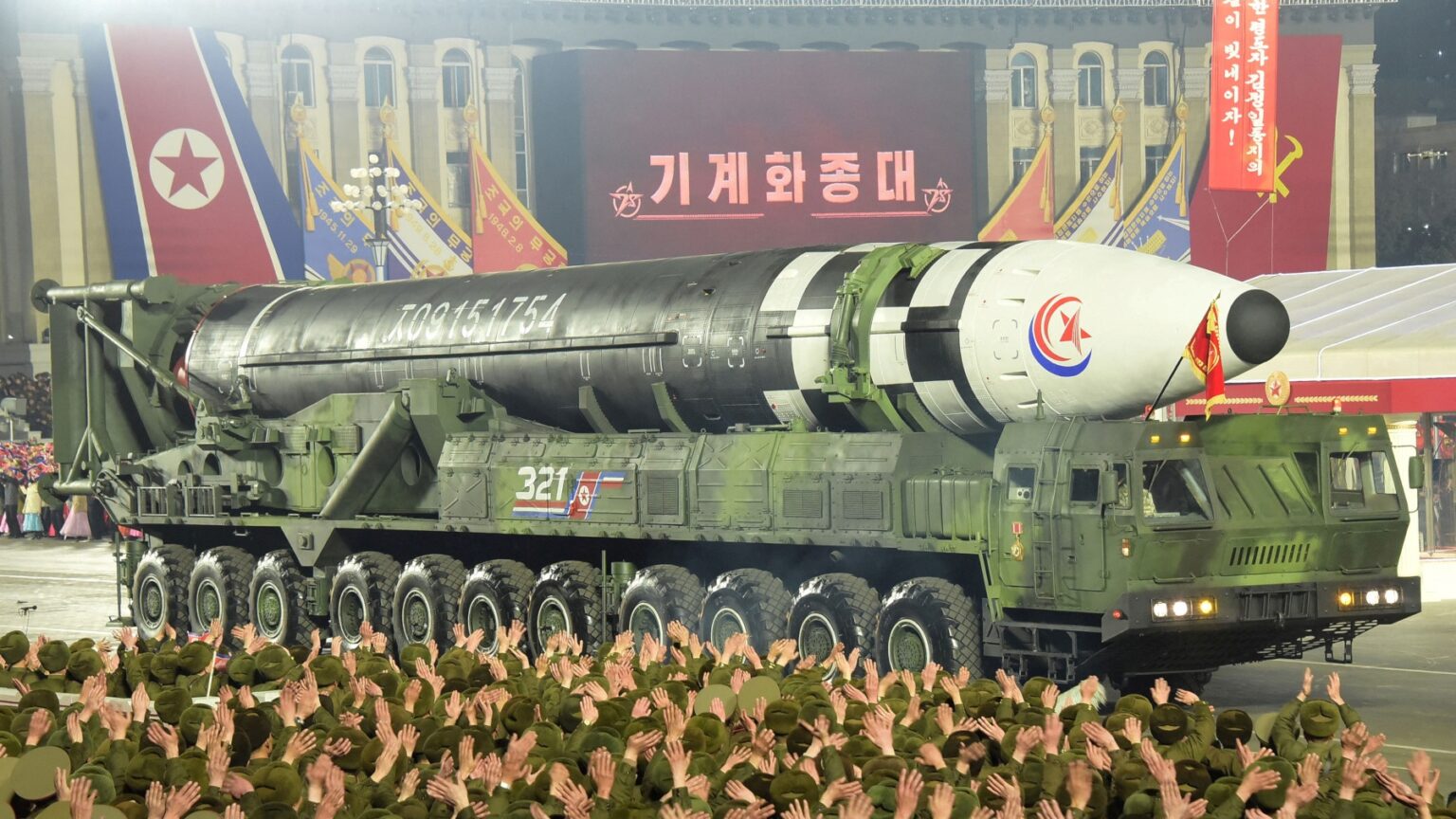North Korea has test-fired another suspected solid-fuel intercontinental ballistic missile (ICBM) after a gap of around five months, according to neighbours South Korea and Japan.
It was Pyongyang’s second missile launch in the space of hours on Monday, and came after Kim Jong-un’s regime warned the US and South Korea against an “open declaration on nuclear confrontation” against North Korea.
The latest launches appear to come in response to South Korean and US defence officials meeting on Friday in Washington to discuss their plans to respond to a hypothetical nuclear attack by North Korea.
The South Korean and Japanese militaries said they detected an ICBM missile test fired at a lofted trajectory on Monday at 8.24am local time (11.24pm Sunday GMT).
The missile reached a maximum altitude of more than 6,000km and flew for 73 minutes before falling into the sea west of Hokkaido outside Japan’s exclusive economic zone, Japanese officials said.
Seoul’s Joint Chiefs of Staff said the ICBM missile fired from the Pyongyang area towards the sea off the North’s east coast and flew about 1,000 km.
These measurements indicate that the weapon has a potential range of 15,000 km, which would reach the mainland US.
If confirmed, it would be North Korea’s fifth ICBM missile test this year, the highest ever for a single year.
The test came hours after North Korea launched a short-range ballistic missile, also into the water off its east coast, according to the South Korean, Japanese and US governments.
South Korea’s military said the short-range missile flew about 570km (354 miles) before landing in the waters between the Korean Peninsula and Japan. It had the range enough to reach key defence sites in South Korea, including US military installations in the country.
The US, South Korea and Japan condemned the latest back-to-back launches by the Kim Jong-un regime at a time when tension are high on the Korean peninsula since Pyongyang successfully launched its spy satellite into orbit in November.
South Korea called the launches a “grave provocation” that threatens international peace and was in violation of UN Security Council resolutions that ban the country from any ballistic missile launches.
Japanese prime minister Fumio Kishida called a meeting of his National Security Council and told reporters that he had so far received no report of injuries or damages from the missile launch.
The US reaffirmed its support to allies in the region and national security adviser Jake Sullivan spoke with South Korea’s National Security Office director Cho Taeyong and General Akiba Takeo of Japan, the White House said.
He condemned the test, “which is a flagrant violation of multiple UN Security Council resolutions,” the statement added.
On 15 December, the US and South Korea held the second meeting of the Nuclear Consultative Group (NCG) since July and vowed that it would be the “end of the Kim regime” if Pyongyang went ahead with a nuclear attack against the US and its allies.
“Any nuclear attack by North Korea against the United States or its allies is unacceptable and will result in the end of the Kim regime, and the US side reiterated that any nuclear attack by the DPRK against the ROK will be met with a swift, overwhelming, and decisive response,” the White house said.
North Korea on Sunday lashed out at the US and South Korea for the meeting it called a “preview of a nuclear war” against Pyongyang.
“This is an open declaration on nuclear confrontation to make the use of nuclear weapons against the DPRK a fait accompli in case of emergency and examine the operational procedures for its implementation in an atmosphere of real war,” the North Korean defence ministry said according to KCNA.
It took issue with the US dispatching its nuclear-powered submarine Missouri in the South Korean port city of Busan on Sunday and US Air Force B-1B strategic bomber in January.
US nuclear submarine visits were once infrequent, but they have become more common due to enhanced agreements between Seoul and Washington, leading to increased arrivals of US military assets.
The USS Carl Vinson, a US aircraft carrier, also arrived at Busan last month as part of an effort to increase deterrence against North Korea’s nuclear and missile programs.
Source: The Independent

